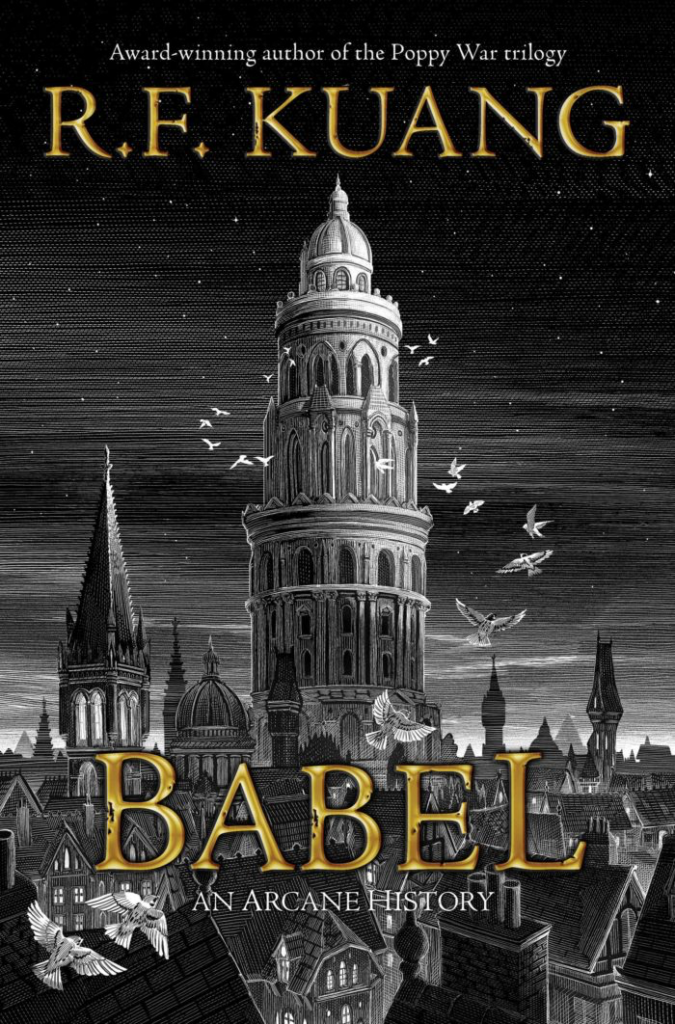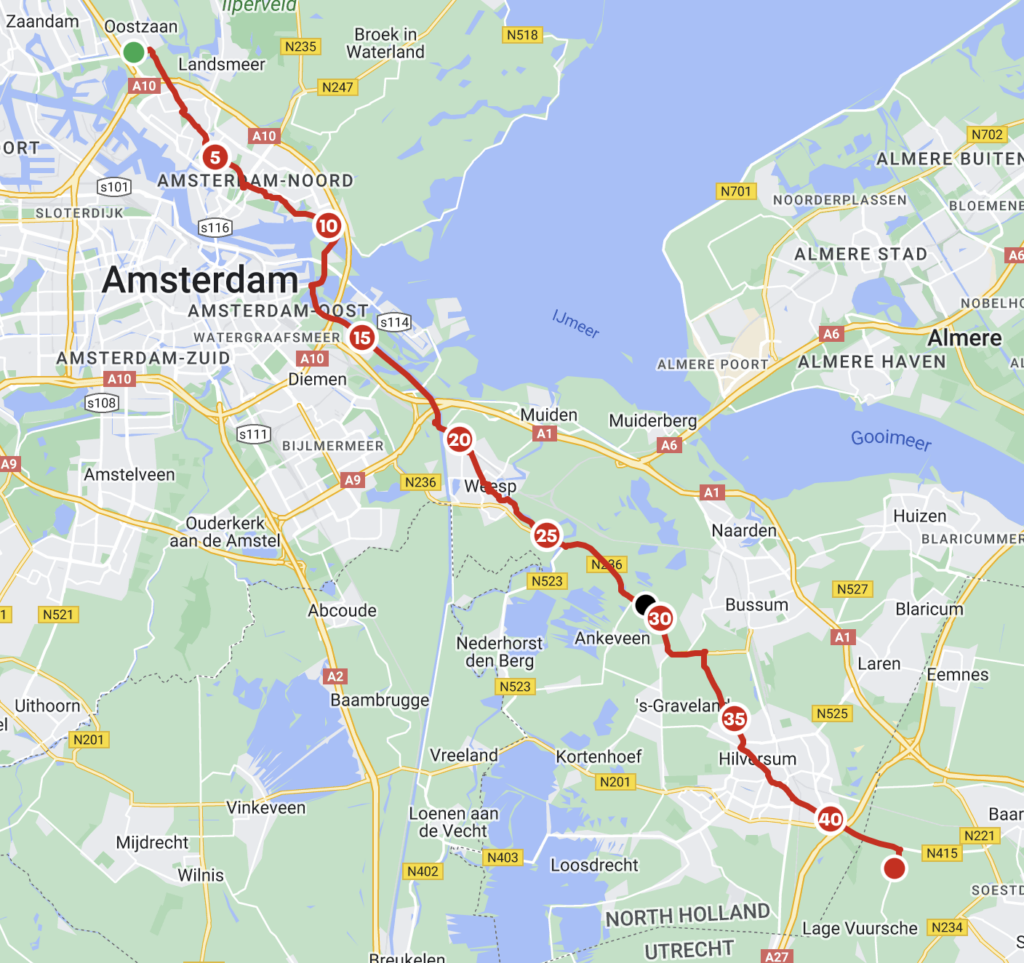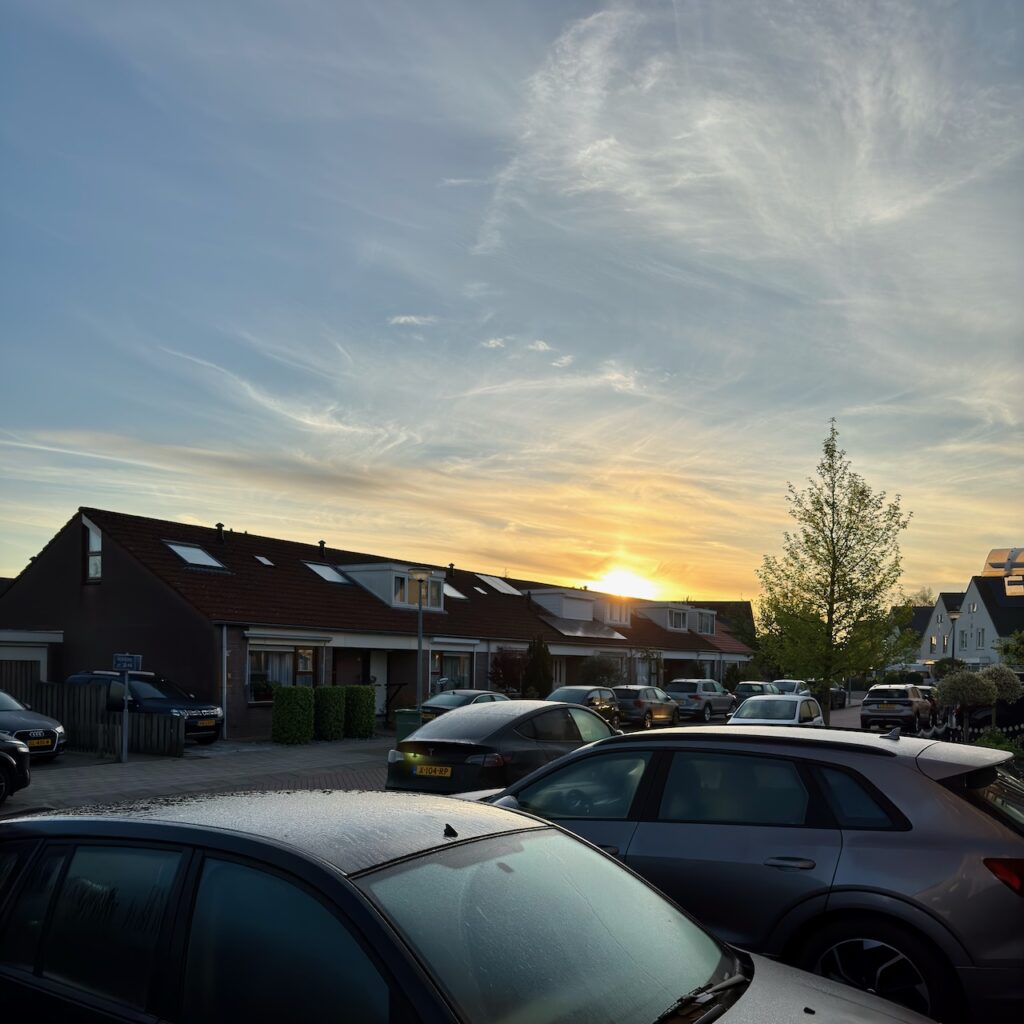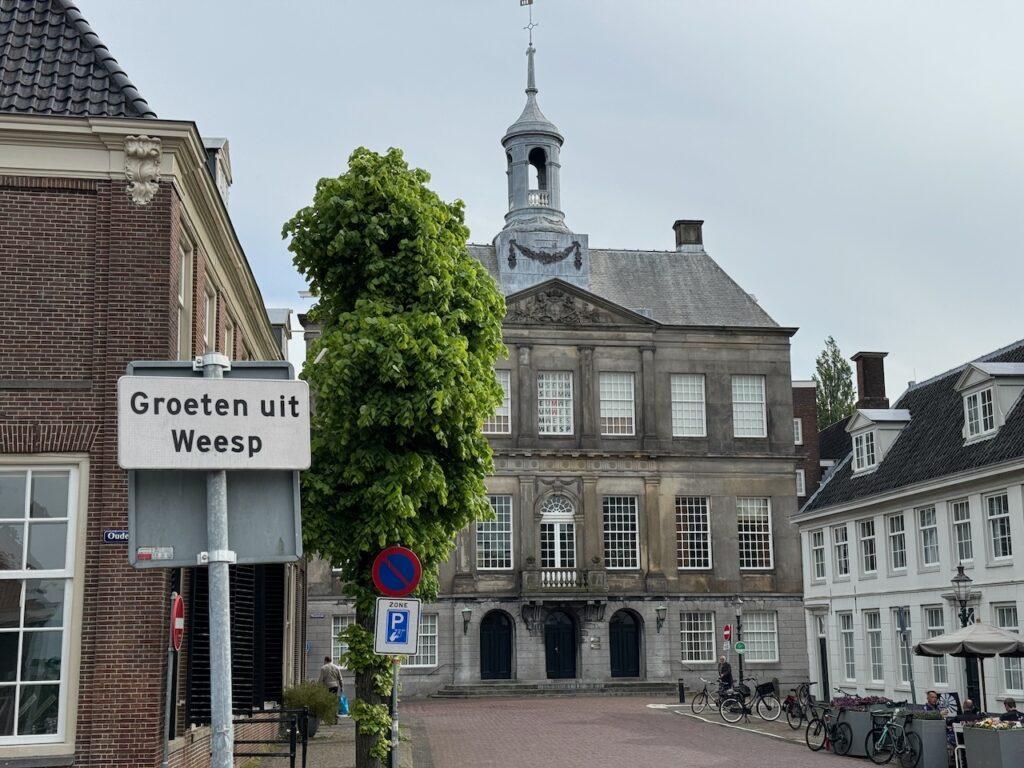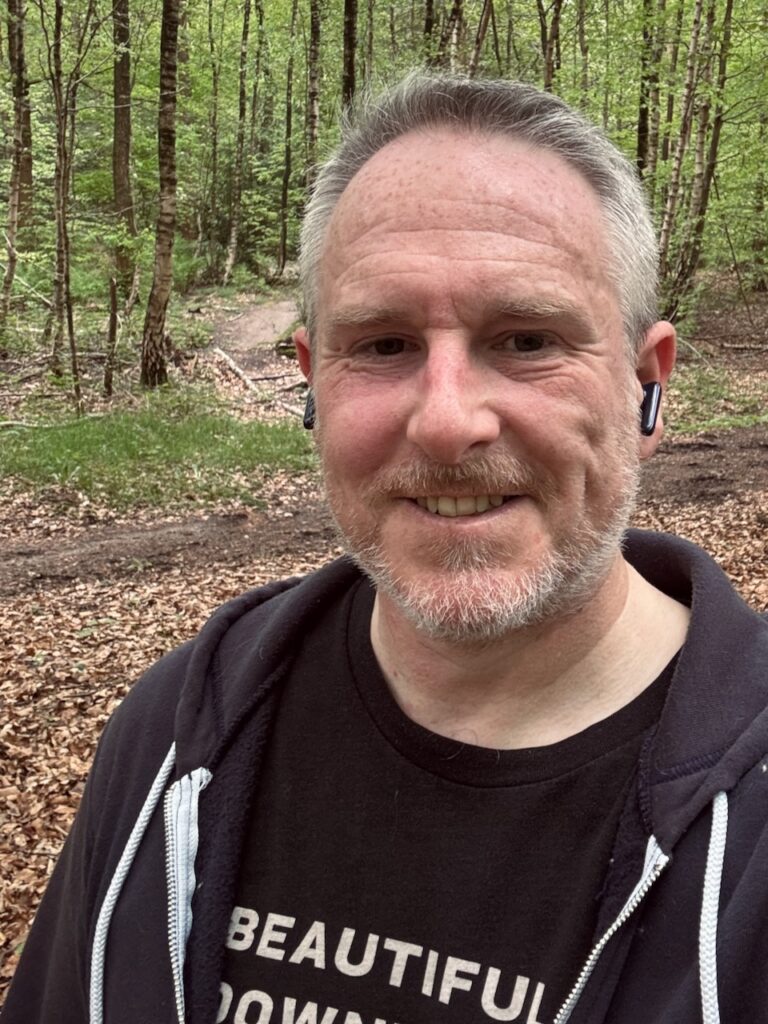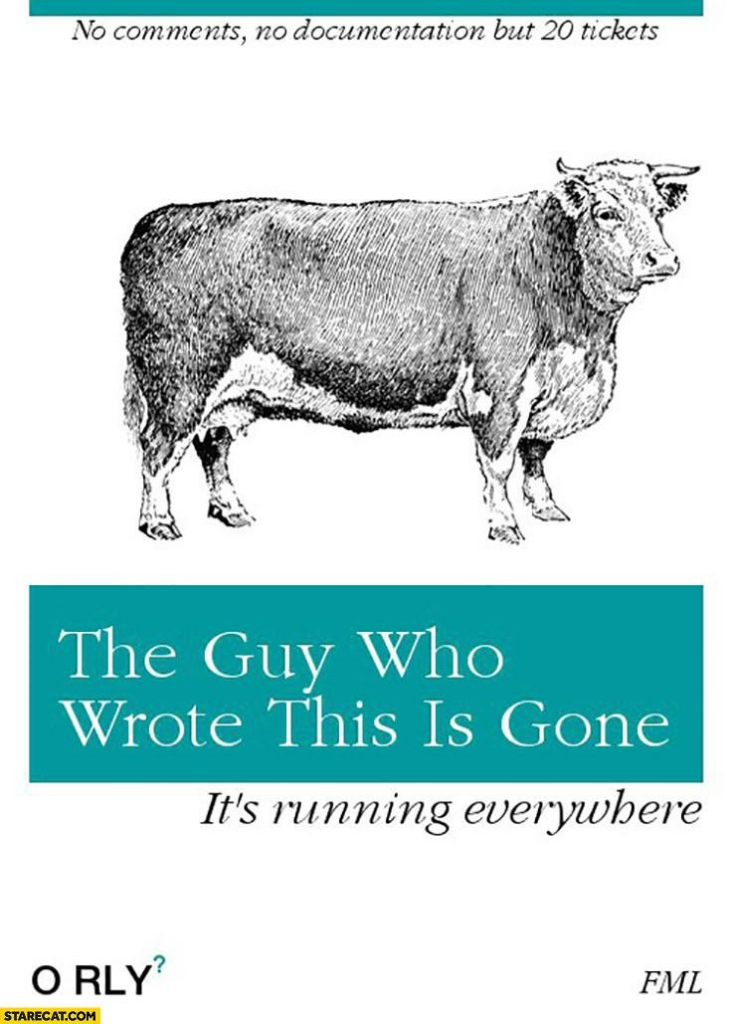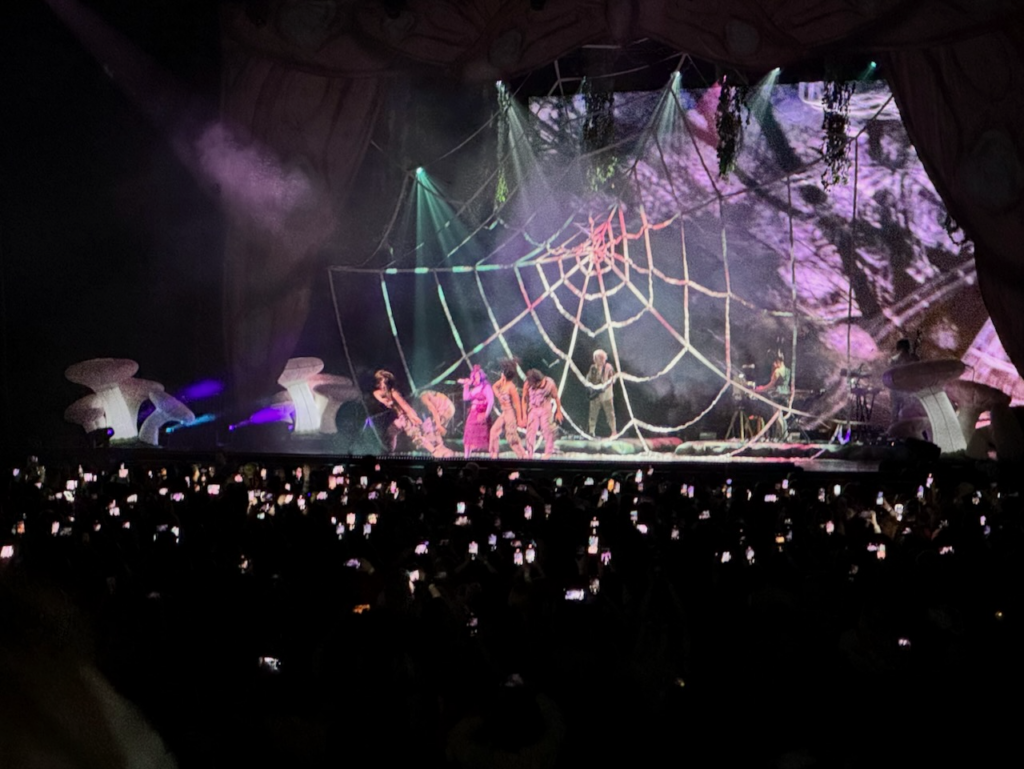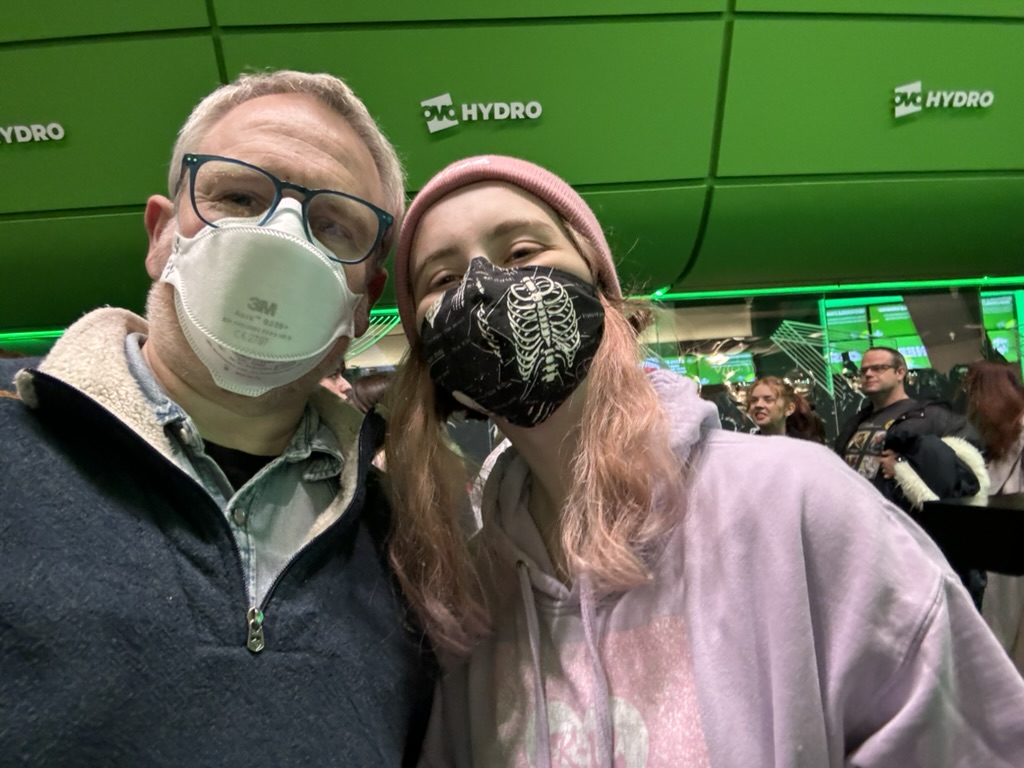Nothing I read or watched or listened to in the year and a half since my last Mixed Media post caused me the same kind of visceral response that Zack Snyder’s film Rebel Moon did at the start of 2024. This is not a good thing. I had been expecting an off-brand Star Wars sci-fi action flick when Fiona and I watched it together. I wasn’t prepared for a frontal assault on my critical sensibilities.
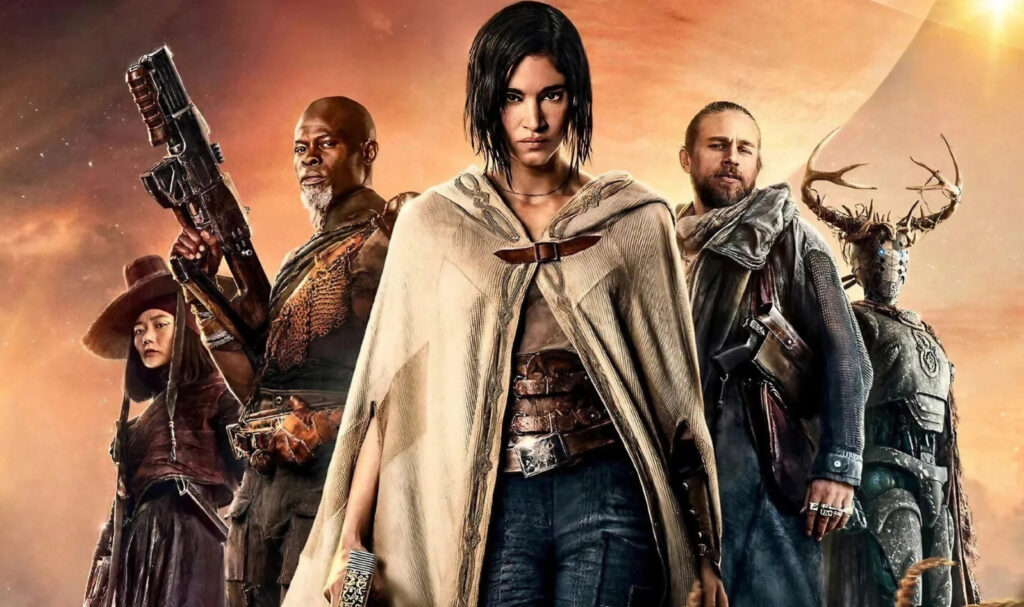
I don’t have super high standards for being entertained by movies. I’ll watch a lot of mediocre fluff it if gives me a few laughs or thrills or knowing winks from a charismatic lead. Rebel Moon, however, is offensively bad. It disrespects the cast, the audience, and a hundred years of cinematic craft. It contains some gorgeous visuals, but it has some of the worst fiction writing I’ve ever experienced, in any medium. Every piece of writing — from the highest level of story, through the act structure and choices about what characters to use to illuminate themes and plot, all the way down to phrasing in dialogue — is incredibly, impossibly bad. With the kind of budget Netflix threw at it, it isn’t even accidentally bad. This is deliberate. Writers and editors worked hard to craft something this dire.
A village girl and young soldier boy are introduced with some tense interactions and potential for worlds-apart romance in act 1 … and then are never mentioned again at all. After the space nazis brutally murder the village elders, the rest of the townsfolk gather in the longhouse to agree that, oh, they’re probably not all that bad actually. In a movie like this, the poor village people are supposed to be crying out for help or hope, not figuring that the nazis might have a good point in oppressing them.
The robot — THE ROBOT! — is the character with THE MOST EMOTIONALLY SIGNIFICANT MOMENT in the whole movie, and it comes at the end of the first act. Genuinely: wow. But then it disappears completely, until a final clever parting shot right at the end of the film.
The second act is all over the place. There’s a slave owner who throws away a prince (a PRINCE) on a trivially unnecessary gamble, and then gets a grisly comeuppance unwarranted by his previous two minutes of screen time. Likewise, the half-dressed PRINCE who should be dead from blunt force trauma after being repeatedly smashed into a mountain by a space griffin gets a similarly un-earned victory beat after those same two minutes of screen time. Will he fight for the rebels? Sure! Why? Who the fuck cares, were you not watching his oiled-up pecs?
There’s a not-a-jedi who forgets that she has FUCKING LIGHT SABERS until she lets herself get stabbed by a giant spider There’s a not-han-solo rogue (introduced in a not-a-cantina scene) who turns out to be a traitor because he sure as heck has no ACTUAL reason to be helping these losers. There’s a rag-tag band of revolutionaries who — out of nowhere — get subjected to the galaxy’s least inspiring life-or-death speech from their leader because…WHY? BECAUSE WHY? Were they on the brink of jacking it in and NOT being revolutionaries or something?
I almost forgot about the “legendary general” they pick up somewhere along the line as well, because I guess they needed someone with actual military experience to COMPLETELY IGNORE.
NOTHING IS EXPLAINED, except where EVERYTHING IS EXPLAINED in tedious flashbacks, or in as-you-know-bob recaps delivered in a dirgeful monotone. It’s a case study of what happens when you reverse the “show, don’t tell” rule.
We’re used to movie bad guys being incompetent, and having fatal flaws that lead to their downfall, but the Evil Empire of Rebel Moon has such brain-meltingly incompetent engineering practices that their flagship — which is capable of reducing a planet to radioactive slag from orbit — is apparently defended and piloted by ONE SINGLE GUNNER in a bubble turret that can be breached by an angry dude with a SHARPENED FUCKING STICK. At least the exhaust port on the Death Star was at the end of a heavily defended trench.
It’s dumb as rocks. It’s SO BAD I JUST CAN’T EVEN. Don’t even get me started on the (pre-credits) post-credits scene that undermined a beautiful and mysterious landscape shot with a weird and unnecessary five-minute tribute to the smarmy villain and his evil master. It was exactly the opposite of “leave the audience wanting more.”
Will Fiona and I watch part 2 now that it has been released? Yes. Will we hate the film, and probably ourselves afterwards? Also yes.
Right, on to the rest. Bear in mind that I’ve adding to this list for over a year, and my memory of some of the less notable entries may be a bit thin…
Books
- NK Jemisin – The City We Became || A bit Neverwhere for New York, crossed with a bit of Lovecraft at the end. Interesting characters, but the horror aspect that I think I was supposed to feel just didn’t materialize. There is a “big bad” out there, but I just didn’t feel a sense of dread. Don’t feel a strong impulse to go out and buy book 2.
- Adrian Tchaikovsky – Children of Time || More “classic” sci-fi, a bit like Andy Weir – scientist as hero. Golden age. Broad span of time, space opera, civilisation-spanning.
- Adrian Tchaikovsky – Children of Ruin || Repetitive. Don’t feel a strong impulse to go out and buy book 3 in the trilogy.
- Andy Weir – Artemis || Heist story on the moon, with Andy Weir’s characteristic attention to scientific and engineering detail. It’s a bit of a distraction here.
- ⭐️ Virginia Braun & Victoria Clarke – Successful Qualitative Research, A Practical Guide for Beginners || Great introduction to the most common forms of modern qualitative research (grounded theory, thematic analysis, IPA). Very readable with good clear examples.
- ⭐️ Richard Osman – Last Devil To Die || Latest entry in the Thursday Murder Club series. You know what you’re going to get: engaging characters, murder, crafty plot. Familiar territory, but very well executed. If you’ve been following the series, this one really tugs on the heartstrings, though.
- ⭐️⭐️ R.F. Kuang – Babel, or the Necessity of Violence || Alt-history period pieces aren’t always my cup of tea, but this is a wonderful, fast-paced story about colonialism, authority, and resistance to power, set in a world of really interesting magic that relies on the subtleties of meaning lost or gained in translation between languages. Got shafted at the Hugo awards.
- Fiona Staples & Brian K. Vaughan – Saga, volume 11 || I wouldn’t call this an outstanding entry in the series, but the characters continue to grow, the dangers they face continue to be urgent, and the world building continues to get weirder.
- Arkady Martine – A Memory Called Empire || An ambassador gets called to the central planet of a vast empire, and gets caught up in a murder and succession plot. This won the Hugo award, but it didn’t do much for me. The characters felt too opaque and somehow dreamlike; the conflicts always slightly obscured or out of focus. The world was interesting, but the story lacked immediacy. (I kept thinking of Lois McMaster Bujold’s Barrayar books throughout, and wanting this to be more like them.)
- ⭐️ Jonathan Ames – A Man Named Doll || I watched the TV show Sugar (see later), and was reminded of how much I enjoy – or at least used to enjoy – private investigator stories. They seem to be a bit out of fashion in publishing these days. I wonder to what extent the internet and ubiquitous connectivity has changed our expectations around what an investigator does, and how that translates into a good story. At the same time, true crime podcasts are very popular, and mysteries still abound. Anyway, this book was good. (I found it by looking up recent winners of the Shamus Awards on Wikipedia, and seeing what was available in the bookstores in the centre of Amsterdam. Of the recent winners, Jonathan Ames was the only author I could find.) It’s only a couple of hundred pages, and Ames’ writing style is concise and snappy. The main character, Happy Doll, is a classic hard-boiled PI: tough with a soft centre, and fuelled by a need for justice despite his outward cynicism.
- ⭐️ Jonathan Ames – The Wheel of Doll || I liked the first book so much I went straight back out and got the second. If you like this sort of thing, it’s also excellent.
- ⭐️ Richard Osman – We Solve Murders || This is a departure from his Thursday Murder Club series, although it could easily be set in the same universe, ready for crossovers. Where the TMC series keeps the crimes local, this book spans the globe, with the jet-setting characters having access to resources that allow them to bop from England to the Caribbean and to Dubai. But despite the billionaires, the assassins, and the private jets, this is still very much a cosy mystery. The writing is snappy and the dialogue is breezy in a way that felt familiar from Osman’s other books. I wondered if it was too familiar at first, with the characters sometimes seeming like echoes of those in the TMC series, but they blossom into their own people quickly enough. I enjoyed it.
Films
- ⭐️ Spider-Man: Across The Spider-Verse || Just amazing. All the gorgeous frenzied animation from the first movie with more new twists. The only thing I didn’t like was that it ends on a cliffhanger, and having to wait over a year for the second part. I wish film-makers wouldn’t do that.
- Evangelion: 1.0 You Are (Not) Alone || Gorgeous aesthetic, terrible storytelling. I couldn’t figure out the world, nor did I feel I could relate to the characters and their motivations. It’s entirely unclear what the angels are, why the world is like it is, why Shinji is the only one that can pilot the Eva, etc. I assumed that all of these things would be explained in the subsequent movies, but I was wrong. I felt like I didn’t have the cultural context necessary to be ready for this experience. (Like if someone had never been exposed to Western superheroes, and was dropped in to The Marvels with no explanation: who the heck is this Nick Fury guy and why does everyone automatically defer to him?) Sometimes entering a work of fiction feels like solving a mystery, and that’s a good thing; but this never got me to the point where I really wanted to know more.
- Evangelion: 2.0 You Can (Not) Advance, Evangelion: 3.0 You Can (Not) Redo, Evangelion: 3.0+1.0 Thrice Upon a Time || I’m not going to give this any kind of emoji because I just don’t feel like I’m capable of judging them. As I said for Evangelion 1, they’re too heavily embedded in a different cultural tradition. They play off tropes and symbolism that pass me by entirely. I recognized that there were emotional beats to the story, but they just didn’t land for me at all.
- ⭐️ Cowboy Bebop: The Movie || Watched this with Alex before we’d watched all of the original show. Gorgeous animation. Approachable as a single stand-alone movie, with more history and context behind it – but much more approachable (from a Western perspective) than Evangelion.
- ⭐️ Assault on Precinct 13 || I had never seen this before. This was a follow-up from the CarpenterFest that Alex and I did earlier in the year. It’s tame by modern standards of action movies, but it was shocking when it was released in 1976. That tells you quite a bit about how movie-making has evolved in the last 40 years; and also about our culture’s acceptance of violence on our screens.
- ⭐️ Elemental || Not top-tier Pixar, but still a fun watch. Like Inside Out, it takes a set of core archetypes and builds a story around them.
- ⭐️ Nimona || Adventure fairytale buddy-movie, with many gender and trans themes to chew on and get excited about seeing in a mainstream animated film. Lovely, playful animiation.
- Bastille Day || Kind-hearted pickpocket bites off more than he can chew, and find himself having to team up with a hard-core CIA agent to stop a robbery or the world ending or something like that. Some fun scenery-chewing interplay between Richard Madden and Idris Elba. A perfectly decent action movie.
- Fast X || Everything but the kitchen sink. The action is predictably bonkers. Jason Momoa does his Jason Momoa thing as a bad guy. It has some Rome in it, which was fun because Abi and I were there last year. Apart from that: not memorable.
- Nope || I found this weak and underwhelming compared to Get Out and Us. It’s a slow burn, and although it does ratchet up the tension effectively, the pay-off didn’t do anything for me.
- The Flash || Not a great superhero film, and Ezra Miller’s off-screen behaviour biased me against this, but it’s pretty decent by DC movie standards, and it’s worth it for the moments with Michael Keaton as Batman.
- ⭐️ Ghosted || This film isn’t going to win any awards, but I found it charming. Dexter Fletcher is a safe pair of hands as a director: he is consistently reliable, and he can bring life to otherwise pretty mundane material. I feel like his credit is a good indicator that I’ll have a good time. Chris Evans and Ana de Armas have good on-screen chemistry as one-night-stand lovers, only she’s a super spy secret agent, and his hopeless romantic gesture gets him caught up end up her mission. International action and intrigue follows. It’s fun!
- 💩 Heart of Stone || All the charm that Ghosted does have, this Heart of Stone…does not. International super spies, check. Reversals and betrayals, check. Kick-ass action scenes, check. But it’s just not fun. I’m sure the producers would love to turn this into the start of a franchise, but I don’t see it happening.
- ⭐️ Dungeons and Dragons || A delightful comedy fantasy action adventure romp that respects its source material and its audience. I look forward to more of this.
- ⭐️ The Deepest Breath || Tense and haunting documentary about world record free-diver Alessia Zecchini. Not for the faint-hearted.
- ⭐️ How to Blow Up a Pipeline || Not a documentary. But it does exactly what it says on the tin. It follows a group of (mostly) idealistic friends who decide that they can’t sit idly by and watch injustice take place. They have to do something about it. Low budget and brutally heartfelt.
- ⭐️ Sonic 2 || Not even going to comment on this, just roll with it.
- The Super Mario Bros. Movie || By the numbers. Forgettable.
- 💩 John Wick 4 || I don’t like putting a poop emoji here, because I enjoyed the other John Wick films, but watching this was literally a numbing experience. How is this a 2h and 50m film? There’s a solid 90 minute movie here, no more. All the bullets and broken bones compound a sense of never-ending exhaustion. You don’t watch a John Wick movie to gain new appreciation of the value of human life, and I’m not generally turned off by action movies with a high body count, but this was too much even for me. It was a pleasant surprise to see Rina Sawayama show up in there with a decent part, though.
- Warm Bodies || A zombie romance film, with an actual happy ending. Cute.
- The Meg 2 || Dumb. Dumb! But the film owns its dumbness and doubles down. If you buy into the stupid, it’s a good time.
- The Creator || Visually amazing, but the plot has a lot of holes, and the worldbuilding doesn’t make much sense.
- Do Revenge || College students being nasty, and losing themselves in the roles they create for themselves and each other.
- ⭐️ Mission Impossible : Dead Reckoning: Part One || I hate that it’s another “first part of a two-parter”. There’s a nice twist on the traditional car chase, with the protagonists handcuffed to each other; there’s a nicely executed traditional traditional fight scene on the top of a moving train; there’s a nice twist on the traditional hanging-off-the-edge-of-a-cliff scene. There’s nothing earth-shattering here; but what it does do it does very well.
- ⭐️ I Don’t Feel At Home In This World Anymore || An ordinary nurse comes home one day to find her house has been broken into and ransacked. She doesn’t get help or sympathy from the police, but together with a neighbour she discovers a shared sense of exhausted injustice and outrage at a world that doesn’t care about the little people, and they set out to get her stuff back. Terrific performances from Melanie Lynskey and Elijah Wood.
- ⭐️ Scream (2022) || “Scream: The next generation” featuring the kids of (some of) the characters from the first sequence of films who are now teenagers, and who find themselves under attack by someone imitating the original Ghostface. In their universe, the original killings were made into a successful movie franchise called Stab, and the whole thing gets delightfully self-referential and cheekily meta. Delightful.
- Scream VI (2023) || Same characters plus some new ones, moved to New York, dealing with another copycat? Not groundbreaking, but still entertaining.
- A Quiet Place part 2 || Follows on directly from the first film; takes the world and expands it a bit. Not groundbreaking, and doesn’t really recapture the hand-over-mouth thrills of the original.
- ⭐️ Fall || Super-tense thriller about two young women who free-climb a giant radio mast and find that they can’t get back down again. The whole thing basically takes place in a tiny space 600m up in the air. Plausible? No. Were my palms sweating the whole time anyway? Yes.
- ⭐️ Monsters || After watching Gareth Edwards’ latest film The Creator (and having enjoyed Rogue One, and his Godzilla) I wanted to go back and watch his first feature. Despite being set in a world where giant monsters from space arrived on earth a few years earlier, this is a tense but meditative travelogue about a photojournalist trying to escort his wealthy publisher’s daughter from Central America back to the USA. The borders are closed and travel is heavily restricted, so they have to make their way by boat, on foot, and by whatever other means they can find. The titular monsters are mostly only hinted at and glimpsed, adding to their mystery.
- ⭐️ Barbie || Yeah, it’s good.
- Luck || Fun little animated movie about a girl who chases a black cat and finds herself in the Land of Luck, where good luck and bad luck are made. As a human, she’s not supposed to be there, and she kicks off a chain of events that upsets the delicate balance.
- 💩 Indiana Jones & the Dial of Destiny || Rubbish.
- The Killer (2023) || It’s good, but, you know, not great. Very cool, very Fincher, very Fassbender.
- The Marvels || If you like Brie Larson as Captain Marvel, and you like Iman Vellani as Ms Marvel, and you wanted to see more of Teyonah Parris as Monica Rambeau after Wandavision, you’ll enjoy this. I enjoyed it. It’s a romp. A daft wee romp.
- ⭐️ Hunger Games: The Ballad of Songbirds & Snakes || I wasn’t expecting too much of this, but it’s actually a good strong prequel.
- Ambulance (2022) || Michael Bay, heist gone wrong, most of the movie set in a stolen ambulance fleeing the scene, lots of shouting about whether to let the cop hostage die. You know what you’re going to get.
- The Equalizer 3 || Retired DIA agent in Italy, picturesque village with violence simmering beneath the surface, mafia, drugs, brutal revenge. You know what you’re going to get.
- Reptile (2023) || Moody noir police mystery. Slow-paced, nice performances, and lovely cinematography.
- ⭐️ The Guilty || Jake Gyllenhaal plays LAPD officer Joe Baylor who is restricted to answering 911 emergency service calls because of an incident that was…not entirely by the book. The film covers a single shift where he takes a call from a woman who has been abducted, and plays out entirely around his desk and office in the call centre. It’s basically a one-man show, with Baylor on a series of increasingly fraught phone calls to try to help.
- ⭐️ Troll (2022) || Norwegian Kaiju movie! Instead of a giant lizard, it’s an ancient mountain troll that has awakened, and must be stopped by a skeptical paleontologist, her folklorist father, and a very confused military. Did this influence my desire to take our 2024 family holiday in Norway? Maybe.
- 💩 Hot Rod (2022) || I had got a recommendation for this from…somewhere. I like Andy Samberg, but the characters he plays can be a bit samey and that can get grating. This film is one of the grating ones.
- 💩💩💩 Rebel Moon || SEE ABOVE.
- Madame Web || Okay, so this is not great, but it’s watchable. However, it’s hard not to feel like the whole thing was spliced together in the editing suite because of so many shots where the actors are responding to dialogue spoken off-screen.
- ⭐️ Dune Part 1 and Part 2 || I held off on watching Part 1 for over a year, until Part 2 was out and I could watch them in close succession. The cinematography (especially in Part 2) is just as stunning as everyone says. They’re films with weight.
- The Conversation (1974) || Minor conspiracy drama with Gene Hackman as an investigator who specialises in (“is obsessed by”) surveillance recordings. He’s not a very sympathetic protagonist.
- ⭐️ Dunkirk || Earnest, well-made.
- 💩 Lift || This is a film that had a lot of budget thrown at it ($100M, per Wikipedia). How does it end up looking so cheap? (In the derogatory sense.) The effects are bad. The sets are supposed to look jet-setting and high-class, but they just look artificial and weirdly lit. The cast is phoning it in. I love heist movies, but even that love has its limits.
- 💩 Aquaman and the Lost Kingdom || Just really bad. Not worth wasting more words on it.
- 💩 Speed Racer || The effects, cinematography, and editing are amazing: I can’t think of any other live action film that captures the look and dynamism of anime. Unfortunately, the live action characters and performances are over-the-top and anime-styled as well, and that feels out of place – so much so that it makes the visuals hard to watch. A swing and a miss.
- Confess, Fletch || I used to like the Fletch books, and the Chevy Chase movies from the 1980s. Perhaps the memory of Chevy Chase is getting in the way for me. This is a mildly funny crime story, but Jon Hamm just doesn’t have the right comic timing to carry it all the way.
- ⭐️ The Dry || An Australian federal agent goes back to his dusty home town after many years to attend the funeral of a childhood friend. His parents don’t believe his official story of his death, and he reluctantly investigates. Old grievances and long-held suspicions don’t make it easy.
- 💩 The Beekeeper || The setup here is fine, if a bit too on the nose: Jason Statham, certified badass, used to be part of a shadowy organization called the “Beekeepers” dedicated to protecting America from hidden dangers. Now he is retired and works — literally — as a beekeeper. When his landlady gets ripped off in a pig-butchering scam, he goes after the people behind it. With great badassery. If the producers had stuck to that plot and spent more time fleshing out the beekeepers it would have been a fine Jason Statham action movie. But they had to escalate it all the way to the top so that somehow the President of the US is involved, and the final shootout in her country retreat is just stupid.
- ⭐️ The Vast of Night || Tense and weird little low-budget movie set in the 1950s. A teen who wants to be a reporter and her friend who has a local radio show discover mysterious signals that might be aliens. Includes a justifiably famous 4-minute tracking shot through the back yards of the small town, into and around the town’s basketball court, and back again to the local radio station.
- Godzilla x Kong: The New Empire || It’s fine, but the Legacy of Monsters show is better.
- The Fall Guy || It’s fine, but I just wasn’t feeling the chemistry between the romantic leads. I like both Ryan Gosling and Emily Blunt, but their on-screen relationship felt distant. (I watched the Mr & Mrs Smith TV show shortly after this, and was reminded what real on-screen chemistry looks like.)
- ⭐️ Inside Out 2 || Good.
- ⭐️ Deadpool & Wolverine || If you liked the first two Deadpool movies, you’ll like this. Is it mostly fan service? Sure. But it’s top quality fan service.
- The Ministry of Ungentlemanly Warfare || I’m not always a Guy Ritchie fan, but this was a pretty solid WW2 comedy action flick.
- Kingdom of the Planet of the Apes || It’s fine.
- The Instigators || As I’ve noted many times, I love a heist story. I’ve also enjoyed a lot of Doug Liman’s films. However, this particular combination was just dull.
- ⭐️ Oppenheimer || Remarkable film. I knew that Robert Downey Jr had won the Best Supporting Actor Oscar for his role in this film. At the start of the movie I just didn’t see it – he seemed fairly bland. But as the story unfolds, his portrayal of Lewis Strauss’s tightly-wound political machinations are revealed in glances and twitches and snarls, and it became clear why he won. I also liked Jack Quaid’s cameo as bongo-playing Richard Feynman, and Benny Safdie as cranky Edward Teller. I saw Teller give a lecture at Heriott-Watt university in Edinburgh in (I think) 1994 while I was at teacher training college. I remember him coming across as gruff and contrary at the time. I don’t think I knew much about the history of the Manhattan project and his role in it.
- Uglies || Pretty decent adaptation of the first book in Scott Westerfeld’s Uglies series. It’s a bit over-the-top and unsubtle, and some of the effects are pretty rough, but not bad. I’d definitely watch a second film.
- ⭐️ Apocalypse Now Redux || Somehow I had never seen Apocalypse Now before. I had only passively absorbed its memes and its influence on cinema. Good grief. The film is from 1979, but it feels like it could have been made just last year. The performances are fresh and raw and utterly captivating. There are some films that I’ll always remember where I watched them; and some songs that I’ll always associate with where I first heard them. I watched this in a tiny windowless cabin on the ferry from IJmuiden to Newcastle a couple of weeks ago, and I think that will stick with me for a long time.
- ⭐️ Totally Killer || Fun lightweight time-travel-teen-slasher-comedy flick.
Episodic Video (“TV”)
- ⭐️ ⭐️ Poker Face (season 1) || The reincarnation of Columbo. This is charming and quirky and wonderful and I can’t wait for more of it.
- ⭐️ Cowboy Bebop (season 1, complete) || Watched this with Alex last year. It’s great.
- ⭐️ Silo (season 1) || Excellent adaptation of the Hugh Howey book “Wool”. Season 2 starts in November, and I’m looking forward to it.
- 💩 Secret Invasion (season 1) || How do you make Nick Fury dull? This was just a slog.
- The Witcher (season 3) || It had been a while since I’d watched seasons 1 and 2, and I found it hard to pick up the threads and remember who everyone was, and who they were running away from. It’s a romp.
- ⭐️ Ted Lasso (season 3) || Not as good as seasons 1 and 2, but still some really good episodes in here. “Sunflowers”, which is set in Amsterdam, was a highlight.
- ⭐️ Over The Garden Wall (mini-series) || Charmingly strange animation about two brothers who take an ill-fated shortcut and find themselves lost in a weird magical world. Short episodes, wonderful animation.
- ⭐️ Invincible (seasons 1 & 2) || The Invincible comic has been running for ages, but it hadn’t crossed my radar until I watched the TV show. And I’m not sure what caught my interest about the TV show? But I got hooked quickly, and enjoyed both seasons.
- Gen V (season 1) || Spin-off of The Boys, set in a superhero university, with a younger cast of characters. Still as gory as the original show.
- Diabolical (season 1) || Another spin-off from The Boys, but this is an animated anthology series of one-off episodes, all written by different people, and animated by different teams in different styles. Lots of violence and drugs and poop jokes.
- ⭐️ What We Do In The Shadows (seasons 1-5) || A spin-off show from the original movie, this follows the same documentary style, and follows a group of vampires living in Staten Island. Silly vampire fun, with some very good long-running story and character arcs.
- The Lazarus Project (season 2) || The first season had a really strong core premise and mechanism, and they explored it amazingly well – I loved it. Season 2 is more elaborate and convoluted. At the end, I don’t think I really understood it all, and that I probably needed to go back and re-watch it parts to wrap my head around it. A bit too clever for its own good. I don’t think it has been renewed for a third season.
- Why didn’t they ask Evans? (mini-series) || Cute, prestige British TV period adaptation of the Agatha Christie novel. Wonderful production values, but Will Poulter’s performance is flat as a pancake.
- ⭐️ Legacy Of Monsters (season 1) || The show bops back and forth between two time periods, the 1940s and the present day. In the 1940s we follow the scientists and their military escort tracking Godzilla, and their discovery of the hollow earth. In the present day, we’re in the aftermath of Godzilla (2014), where two teens are trying to find their father and enlist the help of the remaining survivor of that earlier group. The plots weave well together, and it’s great fun to watch Wyatt Russell and Kurt Russell playing the young and old version of the same character. No digital de-ageing needed!
- ⭐️ Slow Horses (season 3) || The raggedy-ass spy show continues to deliver.
- Full circle (mini-series) || Short Steven Soderbergh-directed mini-series crime mystery about a kidnapping gone wrong, which stirs up long-buried secrets.
- Reacher (season 2) || Simple, brutal revenge story where the bad guys do bad things, the good guys come after them. Not much mystery and intrigue, but plenty of punching. Also a cracking soundtrack.
- Loki (season 2) || Hard to follow season 1. Like season 2 of The Lazarus Project, things here get more complicated and elaborate to one-up the first season and to expand the mythology. Just as The Lazarus Project S2, this felt too complicated. At least it had a solid ending rather than a cliffhanger. Always a joy to watch Tom Hiddleston as Loki, though, the rest of the cast is good as well.
- Marvel’s What If…? (season 2) || Honestly… kinda forgettable.
- True Detective (season 4) || Murder and mystery in Alaska during the days when the sun never rises. There’s a supernatural element. Or is there?
- ⭐️ Fringe (seasons 1-5, rewatch) || Back in the day when shows had 20+ episodes in a single season, inevitably some of them were filler. But as many people have pointed out, this also allows the writers and the cast to really grow the characters, and take them in unexpected directions.
- ⭐️ 3 Body Problem (season 1) || I thought this was a very good adaptation! In large part because it stays true to the spirit of the book(s), but it isn’t afraid to completely remix the characters and to shuffle the plot elements to make it a better TV show. I’m glad it seems to have got renewed for a second season.
- ⭐️ Culprits (mini-series) || Earlier in this roundup I complained about a few rather inadequate heist movies: Lift, Ambulance, The Instigators. Culprits is an 8-episode show that does (mostly) everything right. Jumping back and forth between the present day and the time leading up to the heist is a classic technique and executed very effectively.
- ⭐️ Star Trek: Lower Decks (seasons 1-4) || Just delightful! I enjoyed Star Trek: Discovery, but this is better. The 25-minute episodes are snappy and funny. The cast of lower ranks face more mundane crises, and in keeping with the Trek ethos, they deal with them best through teamwork and friendship. It’s wholesome and also hilarious.
- ⭐️ Happy Valley (seasons 1-3, complete) || Gritty British character-focused crime drama. Dark, with occasional patches of humour.
- Doctor Who (season 14) || I like Ncuti Gatwa as The Doctor – he brings a certain childlike joy to the role. There are a couple of standout episodes in this season, “Rogue” being the one that sticks in my mind. I’ll be annoyed if we don’t see Jonathan Groff’s character Rogue back again in future episodes.
- Knuckles (mini-series) || Silly Sonic fun. Fiona and I had to watch this before the release of the Sonic 3 movie later this year.
- The Boys (season 4) || Continues to be good, but I’d quite like to see them make bigger moves towards bringing the story to a close. It’s dragging on just a tad.
- ⭐️ Dark Matter (season 1) || Glossy adaptation of the Blake Crouch novel about a man who finds that an alternate version of himself from a parallel universe has come to take over his life. Joel Edgerton does a good job playing multiple distinct versions of this same character, shaped by their own universe’s experiences. Apparently this has been renewed for a second season, which makes no sense to me. This was a nicely crafted one-and-done.
- Fallout (season 1) || I haven’t played any of the Fallout videogames, so I have no idea how closely this adaptation follows them. But taken on its own merits, this is an amusing post-apocalyptic road trip adventure. (With echoes of Silo/Wool; or maybe it’s the other way around.)
- House of the Dragon (season 2) || Just as with season 3 of The Witcher, I found it hard to pick up the threads of who-betrayed-whom at the start of this season. I don’t have time to re-watch the previous season of every show before a new one starts. Maybe I need to get better at finding recap videos. Anyway – this was pretty good.
- ⭐️ Barry (seasons 1-4, complete) || A hit man comes to LA and decides he wants to be an actor instead, but he finds it impossible to shake off his old life. It’s a comedy, but also a tragedy, and ik keeps you guessing which was the storylines are going to bend. It goes some weird and dark places in season 4.
- The Acolyte (season 1) || I liked this because it showed the Jedi acting as corrupt secret police. It didn’t exactly show the Sith in a great light either, but it definitely challenged the prevailing narrative of the Star Wars universe. It didn’t have the same gritty subversiveness of Andor, and it clung to (yet another) “chosen one” theme, but… not bad.
- Ahsoka (season 1) || I got a couple of episodes into this and it felt like I was watching season 2 of something. Everyone in the show was referencing people and events that I had never heard of. When I tried to hunt down the back story, I found that this show sits follows on directly from the Clone Wars (133 episodes), Rebels (75 episodes), and The Bad Batch (47 episodes) animated shows, and…uh…that’s too much history for me to catch up on. So I’ve put this on hold for now.
- ⭐️ Sugar (mini-series) || This is…a private eye mystery show. Yeah, that’s what it is. Colin Farrell puts in a wistful tough-guy performance, trying to track down a missing girl. He’s a fan of old movies, and he models himself on the heroes of old Hollywood. There’s a twist, but don’t worry about it.
- ⭐️⭐️ Mr & Mrs Smith (season 1) || Loved this. It picks up some elements from the Mr & Mrs Smith film with Angelina Jolie and Brad Pitt, namely that there’s this “married couple” by the name of John and Jane Smith who are secretly also assassins, but it builds a completely different world around them, and how they got there. Maya Erskine and Donald Glover are so good together on screen. This isn’t really a romance show, but they have so much easy natural chemistry together, both when they’re coming together and when they’re trying to kill each other. I hope there will be more to come.
- Kaos (season 1) || I hate it when the writers don’t give a show a proper ending, and just assume there will be another season to follow it. Okay, so as a re-telling of classic Greek myths we have some idea of how this is going to go, but it has enough twists that we can’t take that for granted. There’s a ton of inventiveness here, but it felt drawn out too far. I really wish this had been produced as a mini-series with a conclusion.
- ⭐️ Truth Seekers (season 1; only season) || Nick Frost is a broadband installer who hunts ghosts in his spare time and talks about them on his YouTube channel. The new junior installer assigned to him has a secret in his past, and may have something to do with a rapid increase in supernatural activity. Comedy-horror, well executed, and builds up to a satisfying finale. (Didn’t get renewed for a second season, but the finale was not a cliffhanger.)
- ⭐️ Pantheon (seasons 1 & 2, complete) || Animated show about the arrival and ascendance of “Uploaded Intelligences” (UIs), based on a series of stories by author Ken Liu. Sad, tense, funny, scary, mind-bending. The end of the second season feels a bit rushed, but perhaps no more so than the end of Liu Cixin’s Death’s End, and equally mind-bending.
Yikes, that’s over 6000 words covering about 17 months in which I watched 68 movies, 39 TV shows (many with multiple seasons), but only read 12 books. I feel like I can do better on the reading front. I also feel I should do better on writing these Mixed Media posts more regularly, but I’m pretty sure I’ve said that before and it didn’t happen. Oh well.
